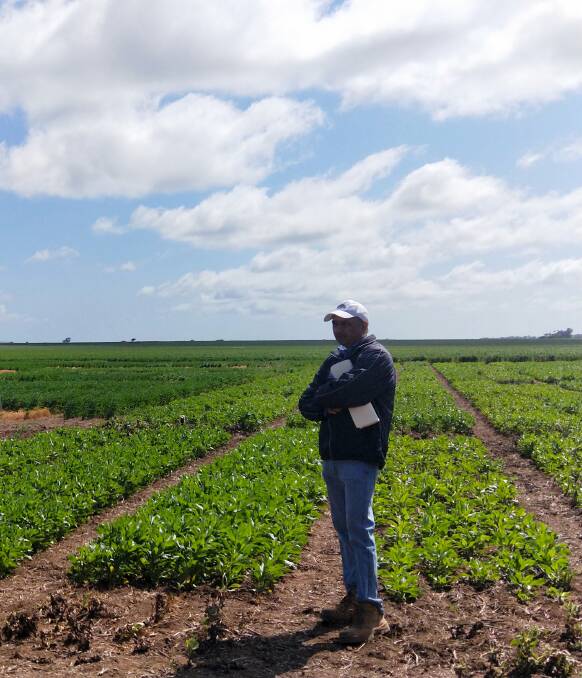
SAFFLOWER trials at Farrell Flat have shown promising results in increasing the amount of broad leaf and grass herbicides that are safe to use on the relatively uncommon crop in southern Australian conditions.
In June this year, SARDI senior researcher Navneet Aggarwal - in collaboration with Agrilink, and funded by Go Resources - sowed Safflower trial plots to determine herbicide tolerance.
Mr Aggarwal said the trial aimed to determine what options were available for growers to manage frost-prone areas across their cropping program better and limit impacts on the bottom line when a cereal, pulse or canola crops.
"A lot of crops virtually have no frost tolerance and growers are relying on any strategy to limit the effect of frost damage on crops - Safflower is definitely an option," he said.
Despite the trial being in its early stages - Mr Aggarwal said the team was confident that with further trials, a complete package for weed control can be created.
By attempting to identify safe herbicides for the crop, the end goal is to get it registered for use by the Australian Pesticides and Veterinary Medicines Authority.
"There is little data for Safflower crops - we need to determine if particular chemicals that are currently on the market could cause any damage on emerging crops, crop vigour and yield," Mr Aggarwal said.
A few growers at Farrell Flat are growing the crop on a commercial scale and Mr Aggarwal said he was watching the results closely to help gain further information.
RELATED: Quality to drive hay demand
Options rise for oilseed crop
FINDING out the damaging results from frost-damage at harvest can cause havoc within a cropping program and researchers are working tirelessly to identify new crops and strategies to help lessen the risk and crop loss.
Safflower is not a widely grown crop in SA but SARDI senior research agronomist Navneet Aggarwal said there was plenty of merit in the crop and it could become a viable solution for growers to combat high, frost-prone areas.
"The entire idea is to offer an agronomic package that allows growers to not persist with crops that have no tolerance to frost," he said.
"The limited research into Safflower has meant growers are probably not really aware of the crop's potential."
In the first week of June, trial plots were sown at 45-50 plants a square metre after about 25 millimetres of rain arrived.
In past practices, the crop has been sown in autumn to spring but it has been identified that the maximum yield is achieved with a winter sowing in May, June and July.
"We are still investigating which sowing period is ideal in southern Australia," Mr Aggarwal said.
"But despite the limited information on the crop, growers have continued to look for alternatives in frost paddocks and gain some type of assurance that the crop will perform."
Safflower's reproductive phase is outside the high frost risk period, whereas cereal and canola crops come to the reproductive stage when frost damage is more common.
"Most of the frost damage period has passed when Safflower is flowering - so in general, it will escape the frosty periods," Mr Aggarwal said.
The trial is monitoring the safety and efficiency of five grass herbicides and five broadleaf herbicides.
Mr Aggarwal said out of all the broadleaf herbicides, just one was registered for in-crop use in safflower crops.
Two of the broadleaf herbicides caused considerable damage on the crop so the safety of those on the crop is not up to scratch.
But grass herbicides produced more promising results, according to Mr Aggarwar.
"So far, the trial has shown that all five are safe - there has been no damage," he said. "We are not seeing a loss of plant numbers and have early plant vigour but one product did cause bleaching on the crop."
Mr Aggarwal said growers can achieve the same level of productivity of other high-yielding crops but avoid frost damage to seeds.
"Safflower could achieve 70 per cent of the crop yield that are grown in the best areas on the farm," he said.
"Crops grown in the frosty areas that Safflower can perform in means that instead of a 100pc loss of yield, growers are gaining 70pc."
- Start the day with all the big news in agriculture. Sign up here to receive our daily Stock Journal newsletter.


